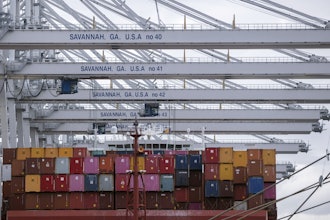Logistics is expanding, and at the end of 2018, unemployment rates decreased. At the same time, consumers were looking forward to the financial benefits of this year’s tax fillings following the passage of the Tax Cuts and Jobs Act. Although government reports were delayed at the beginning of the year due to the government shutdown, all indicators from the period before the government shutdown suggest logistics will continue to expand well into 2019. Shippers need to understand how the state of the logistics industry will affect operations and why high-quality reporting, including both internal and external reports, is crucial to proper forecasting and planning.
Consumer Confidence Contributed to a Record-Breaking Holiday Shopping Season to Enhance the State of Logistics Industry Growth
As explained by FleetOwner magazine, the 2018 holiday season broke records for many retailers, especially Amazon. Consumers went shopping online and in brick-and-mortar stores, and although specific datasets for Amazon sales and the exact figures for Walmart are not yet available, significant renovations in delivery options may have contributed to higher consumer confidence and ease in shopping. At Walmart, shoppers could use the large purchase vending machines to pick up their orders in New Braunfels, or consumers could scan a barcode and enjoy a relaxing moment in the plush sofas at the Walmart in Lubbock.
Shippers Have Noticed the Importance of Guest Experiences
It’s easy to assume conversations about shippers involves warehouses, but it is essential to consider the brick-and-mortar experience and its impact on warehousing and shipping. Large-scale retailers can leverage stores-as-a-distribution center for both buy online and pick up in store purchases, as well as orders shipped directly to consumer homes. In today’s world, consumers care about experiences, and that fact can be used to
Business Intelligence Will Help Shippers Identify Areas of Waste
The application of business intelligence ranges from better risk management to effective freight tendering and beyond. The potential applications are endless, and in the connected world of today, business intelligence benefits shippers by generating detailed reports in minutes, not hours, making informed decisions, sending reports to team members and more. When shippers communicate with their teams more thoroughly, workers are more likely to get shipments ready for pickup at the loading dock on time. This has the added effect of increasing the attractiveness of freight, a prerequisite for gaining shipper of choice status.
Strong Quarterly Growth for 2018 Will Continues in 2019
Strong growth throughout 2018, as well as reports of record-breaking sales for the holiday season, will likely continue through 2019. This will have an additional impact on capacity and logistics costs. There are three key factors affecting capacity; these include available capacity, available truckers, and increasing shipping volume.
Capacity is simply unavailable. The HOS regulations limited how long today’s active drivers can work. Meanwhile, drivers may be unavailable, resulting from HOS compliance off-duty hours or even aging trucks. Unfortunately, the volume of e-commerce will continue to increase. E-Commerce grew 15.4 percent in 2018, and growth reports for the final quarter of the year have not yet been released. However, the surge of omnichannel in the height of holiday shopping will likely contribute to the most significant quarterly growth for the country that’s been seen in years.
Until the release of government reports to detail the exact growth rates for the fourth quarter, shippers should expect for e-commerce to continue growing. They should also understand that capacity will likely result in subsequent general rate increases beyond the initial rate increases announced in December among carriers. Ultimately, better visibility into existing freight management will help shippers understand their logistics needs, enabling better planning and forecasting.
In a Nutshell
The government shutdown delayed the release of economic and federal reports, excluding those published by the Bureau of Labor Statistics, reports Hellenic Shipping News. However, agencies typically release stalled reports upon reopening of the government. As of January 10, the continued shutdown meant the latest reports for the state of logistics are unavailable. Fortunately, shippers that remain mindful over their operations and ensure maximum compliance with all regulations, as well as consider the likelihood of continued capacity issues and growth in e-commerce, can navigate the uncertainty. In other words, it is time to start leveraging the power of dedicated logistics reports for your organization.
Adam Robinson oversees the overall marketing strategy for Cerasis .























